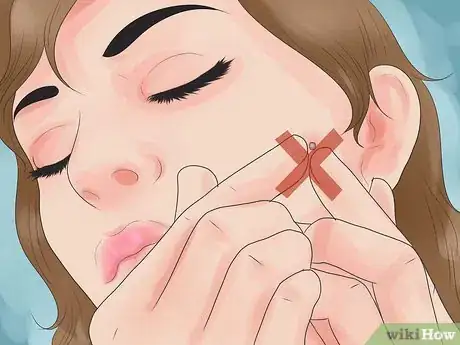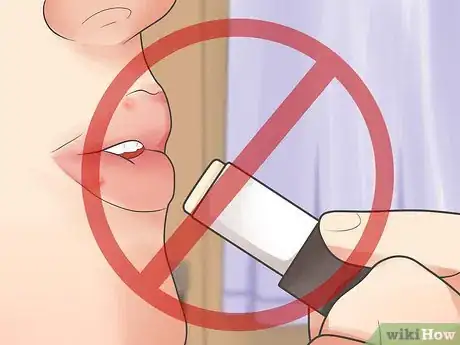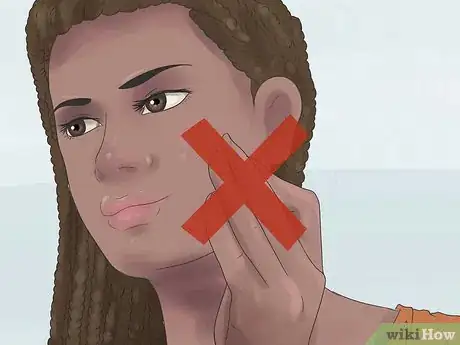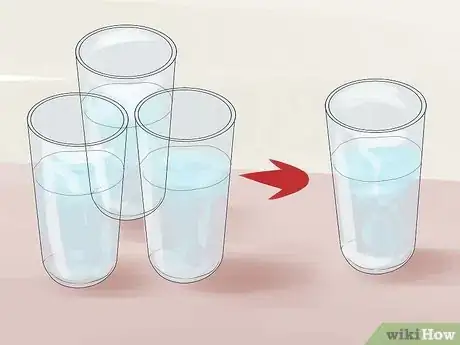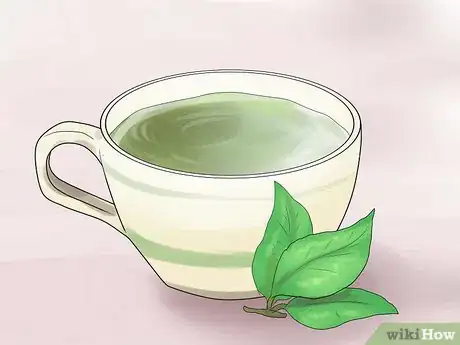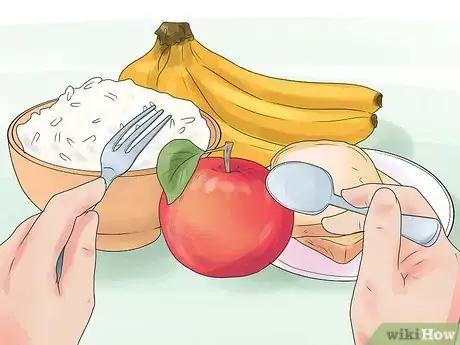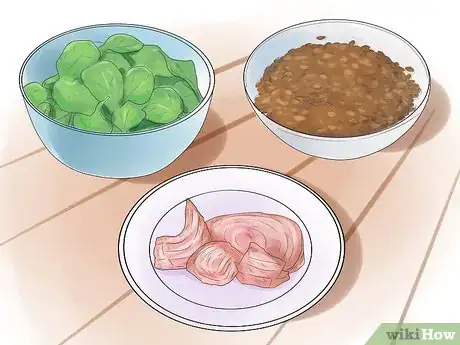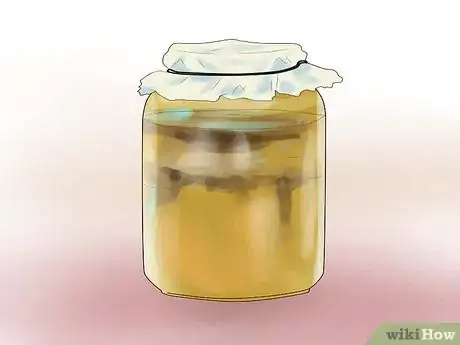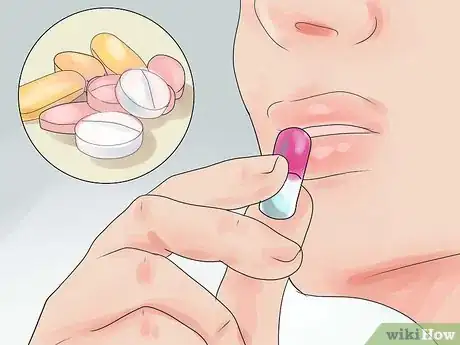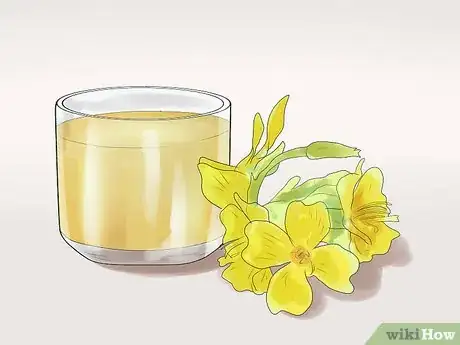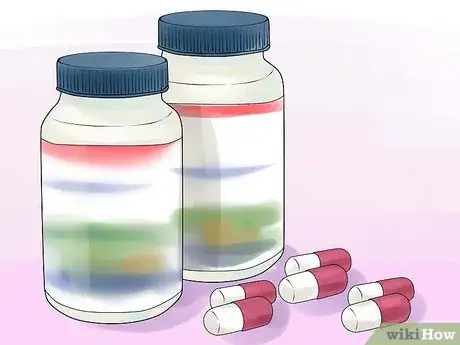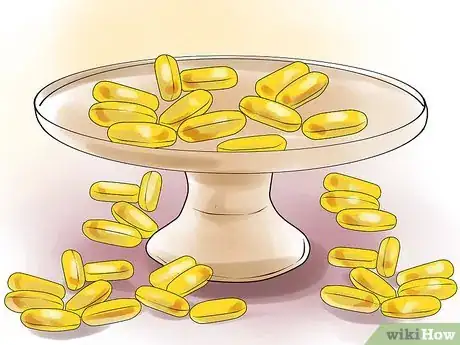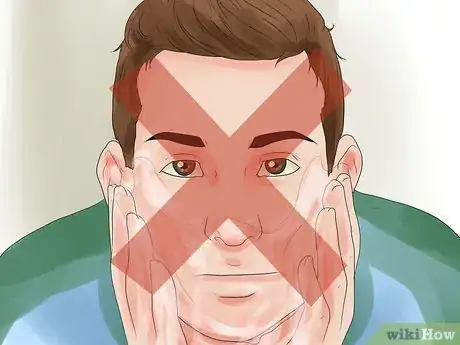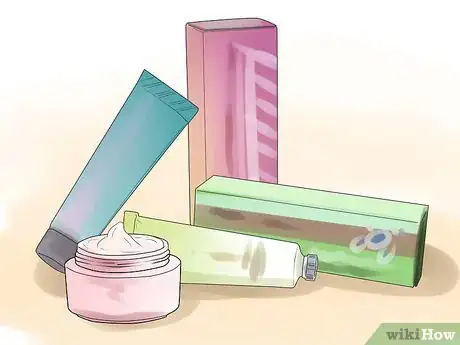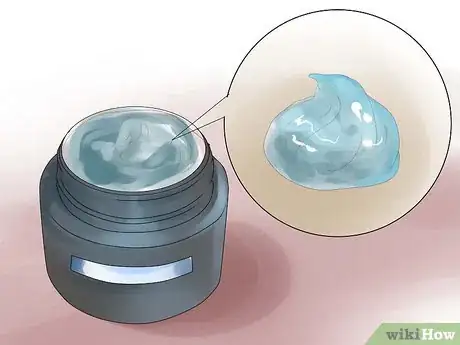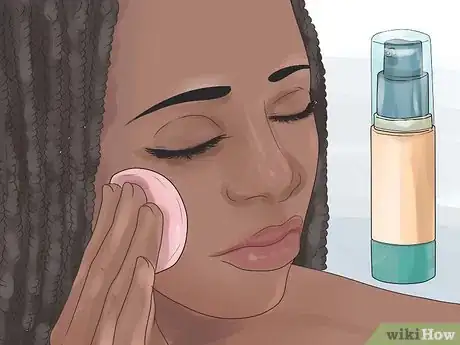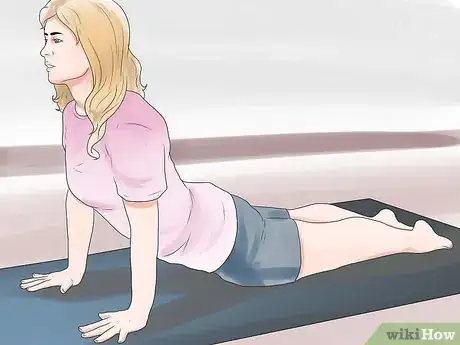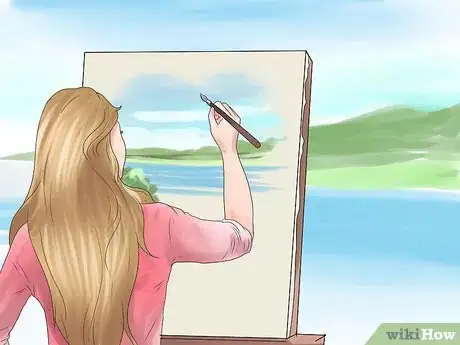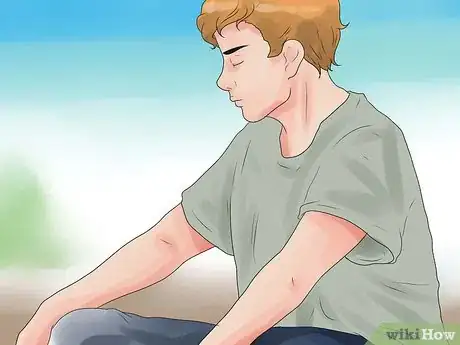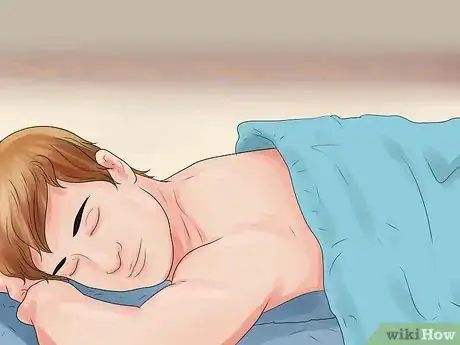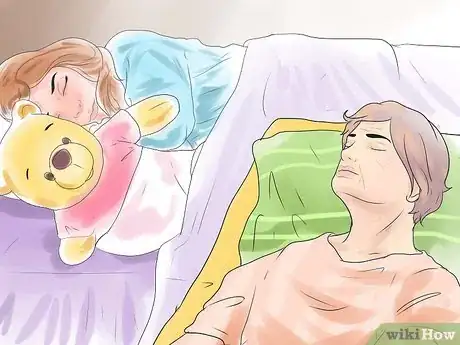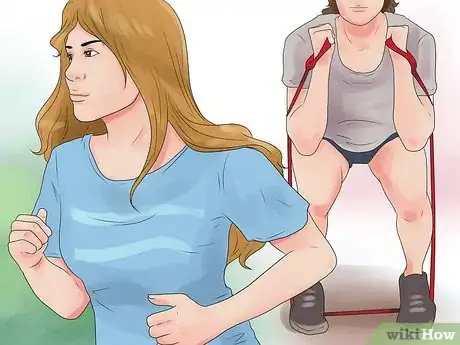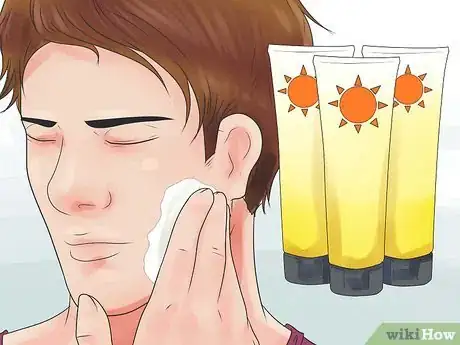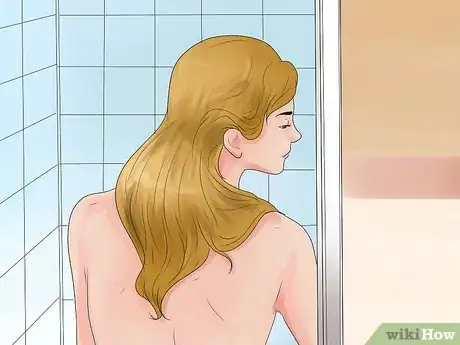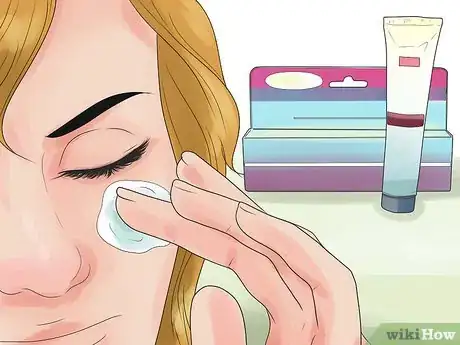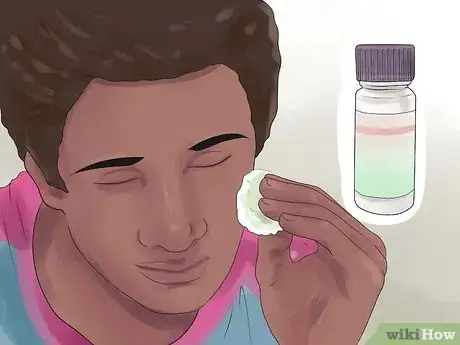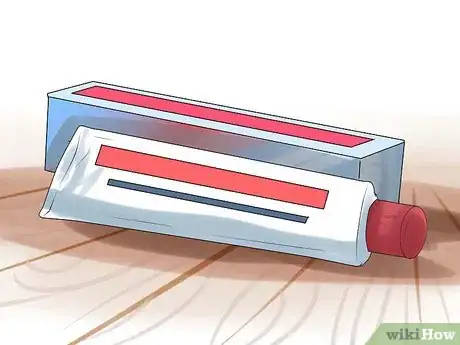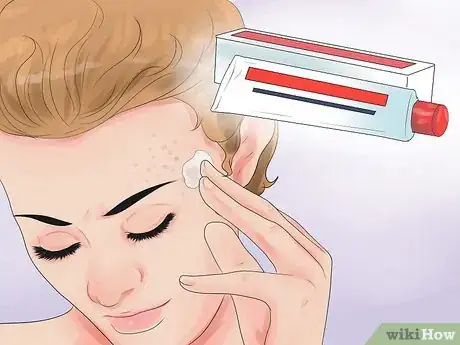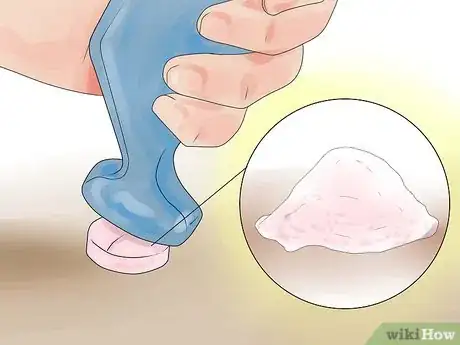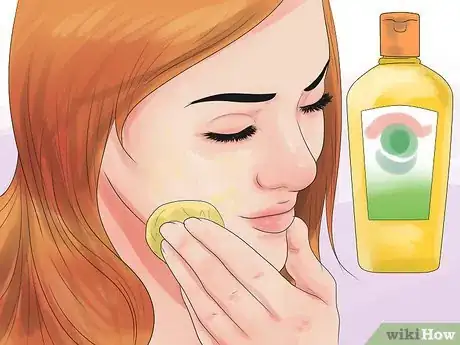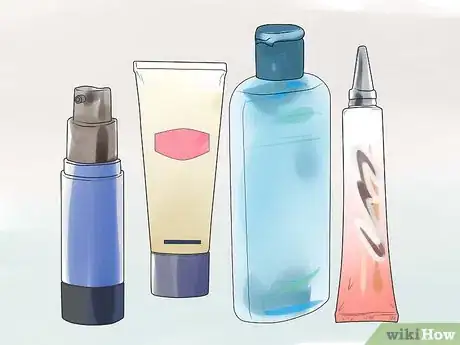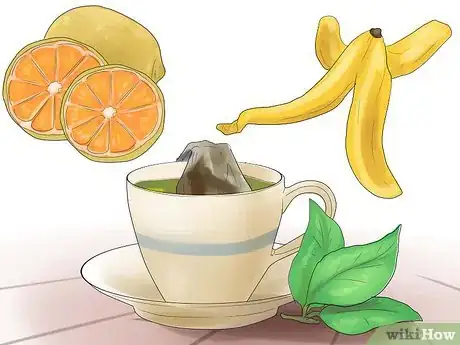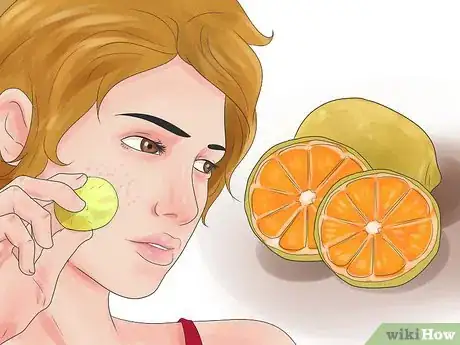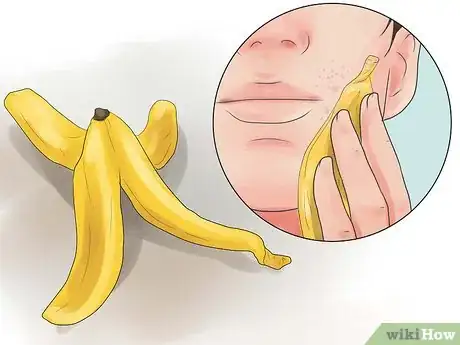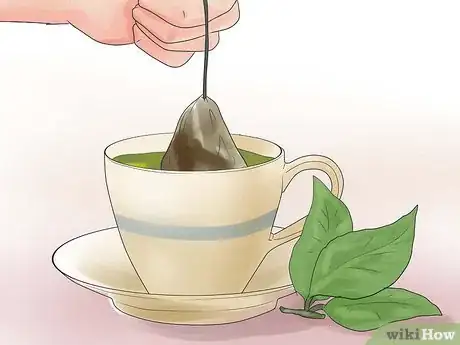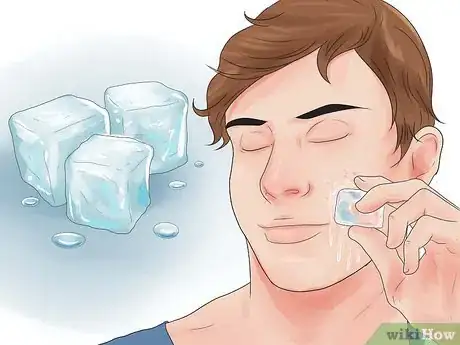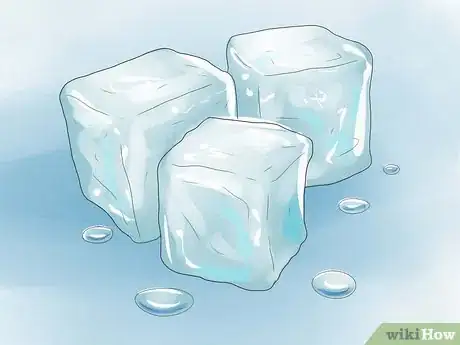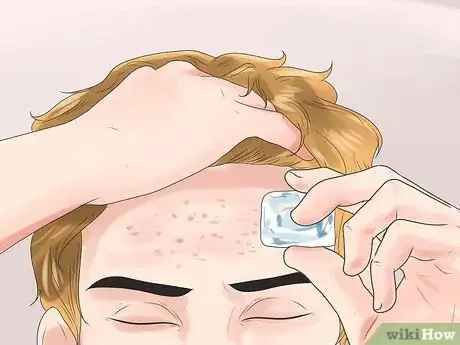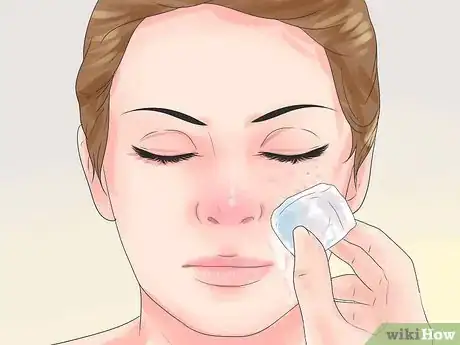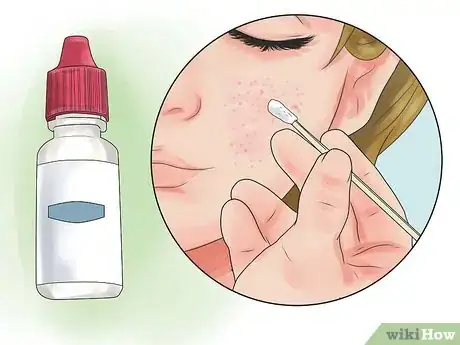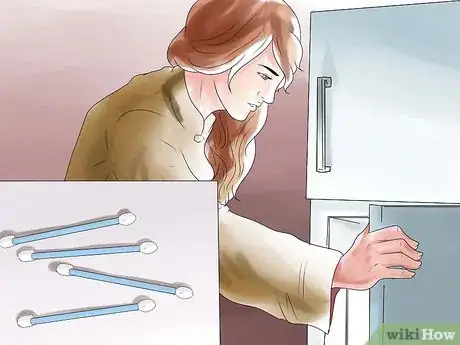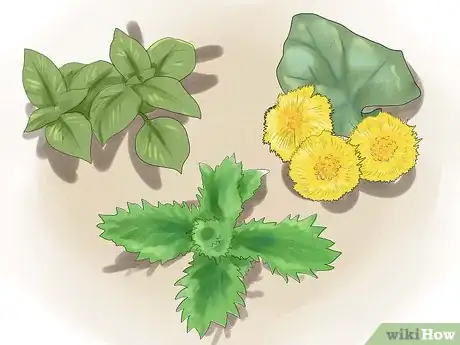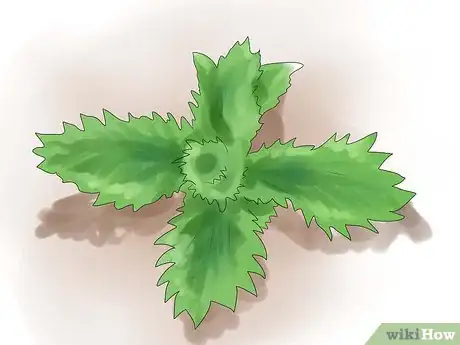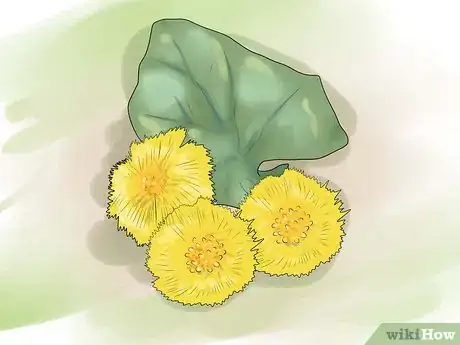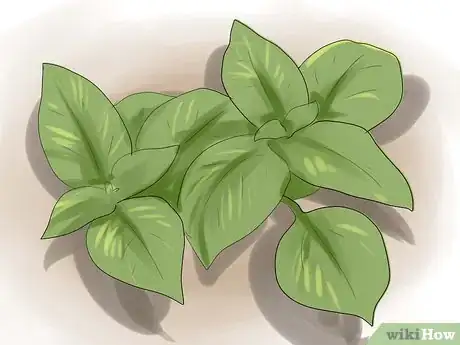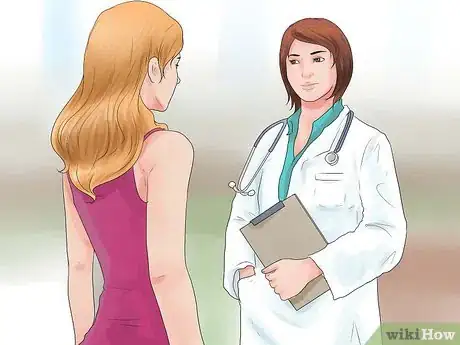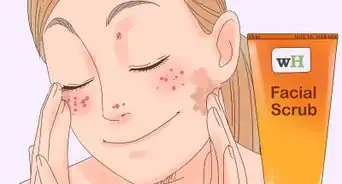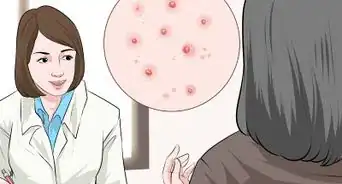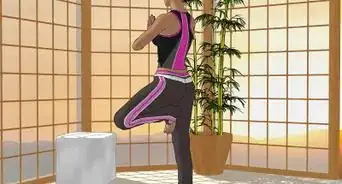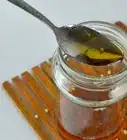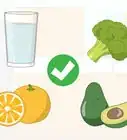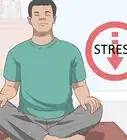This article was co-authored by Mohiba Tareen, MD. Mohiba Tareen is a board certified Dermatologist and the founder of Tareen Dermatology located in Roseville, Maplewood and Faribault, Minnesota. Dr. Tareen completed medical school at the University of Michigan in Ann Arbor, where she was inducted into the prestigious Alpha Omega Alpha honor society. While a dermatology resident at Columbia University in New York City, she won the Conrad Stritzler award of the New York Dermatologic Society and was published in The New England Journal of Medicine. Dr. Tareen then completed a procedural fellowship which focused on dermatologic surgery, laser, and cosmetic dermatology.
There are 9 references cited in this article, which can be found at the bottom of the page.
wikiHow marks an article as reader-approved once it receives enough positive feedback. This article has 14 testimonials from our readers, earning it our reader-approved status.
This article has been viewed 2,725,445 times.
Acne is an incredibly common skin condition that everyone deals with at some point in their life. Though annoying, acne is fairly easy to treat and there are a number of things you can do to get rid of your current pimples and prevent further breakouts from happening.
Steps
General Tips
-
1Don't pop your pimples. This is the number one rule! Pimples contain nasty bacteria. If you pop your pimples, that bacteria has a chance of getting inside other pores and giving them a place to stay without charging rent, so to speak. Make sure your pimples pay rent.
-
2Consider going without makeup for a while. Foundation and lipstick can be harmful to the skin. Although it may be a bit embarrassing going fresh faced if you have bad skin, going "bare" will definitely help your skin clear up.Advertisement
-
3Another disadvantage of popping pimples is that the skin around the pimple, and the pimple itself, will become inflamed. Inflammation will cause even more redness and pain.
-
4Try not to touch your face. Your hands (no matter how many times you wash them) have oils and dirt on them, and are vectors for bacteria. If you're constantly wiping that dirt, oil, and bacteria back onto your face, chances are it's not going to respond too well and you will also end up spreading even more of the bacteria to other areas of your face.
-
5Drink enough water. Many doctors recommend that you drink between 9 and 12 cups of water per day (2.2 to 3 liters), depending on whether you are a girl or guy.[1] (Women should drink 9 cups, men should drink 12.) Your skin is an organ in your body, too, and like your kidney, it needs adequate amounts of water to function properly.
-
6Cut sweet, sugary drinks like sodas, juices, and smoothies out of your diet. Although the evidence has been disputed for decades, new reports seem to indicate that diets do have a substantial effect on acne, listing sugar as a trigger.[2] Sugars cause a spike in insulin, which in turn stimulates certain pimple producing hormones.
-
7Drink less milk. Milk, too, has recently been implicated as an acne-producing agent. Milk stimulates male sex hormones — testosterone and androgens — that, along with insulin, cause nasty pimples.[2]
-
8Unsweetened green tea may be helpful, too. Green tea contains tons of antioxidants that help fight free radicals; free radicals affect the cells that may be responsible for signs of aging in the skin. For a healthy alternative to water, brew some tasty and healthy green tea!
-
9Eat a balanced diet. Diet can help your complexion look its best if you let it. There's nothing amazing about the following sentence, and you can probably guess what it's going to be: eat more fruits and vegetables, more healthy fats, and experiment with probiotics
-
10People who eat more fruits and veggies, and less milk and sugar, tend to have less acne.[2] Make sure you get 5 to 9 servings of healthy vegetables (especially leafy greens) per day.
-
11Eat omega-3 fatty acids. There's fat, and then there's healthy fat. Healthy fats, like omega-3s, help fight inflammation and promote healthy cells.[3] Omega-3s are damaged by oxygen, meaning if you eat foods that are rich in omega-3s, try to eat them raw. In a pinch, baked or broiled is better than boiling or fried. Foods rich in omega-3s include:
-
12Consider probiotics. Probiotics are healthy bacteria found in certain foods, such as kombucha, that promote good digestive health and cut down inflammation. Probiotics such as lactobacillus may improve acne. Look for probiotics at your local grocer's or natural health store.
-
13Eat the right vitamins, in moderation. This one is another no-brainer. The right kind of vitamins will help your body create vibrant, wonderful skin and fight acne to boot. Vitamin-A has been particularly effective in promoting healthy skin. Do not take vitamin-A if you are pregnant.
-
14Try evening primrose oil. Evening primrose oil is an anti-inflammatory omega-6 fat, a deficiency of which may cause acne.[5] Take 1000 to 1500mg twice a day.
-
15Try zinc citrate. Zinc citrate helps with protein synthesis, wound healing, and normal tissue function. Take 30 mg a day.
-
16Try vitamin-E. Critical for skin health, vitamin-E is low in many acne sufferers.[5] Take 400 IU (international units) a day.
-
17Don't try to wash your face more than twice a day. Washing your face too much will only make your face dry, causing your face to produce more oils, which unfortunately equals more acne.
-
18Moisturize after each time you wash your face. Washing strips the moisture from your skin as it fights the acne-producing bacteria. Ensure that you give your skin the moisture it needs, even if you have naturally oily skin.
-
19Use moisturizers that are non-comedogenic. This simply means that they won't clog your pores. You don't want your moisturizer to clog pores right after you've cleaned them.
-
20If you do happen to have naturally oily skin, try looking for a gel-based moisturizer. These kinds of moisturizers, as opposed to cream-based moisturizers, won't make your skin feel as clammy and oily.
-
21Use a toner for oily skin. What is a toner? A toner is a lotion or wash that helps shrink your pores while cleaning grime and dirt away. Be careful about toners with alcohol because they will wipe away the oil from your face. This causes more oil to be produced, along with more acne. Find a toner that is low on alcohol but still effective.
-
22Remove as much unhealthy stress from your life as possible. Doctors aren't completely sure why, but they do know that there is a link between stress and skin disorders, specifically stress and acne. Somehow, the cells that produce sebum, which is the stuff that ultimately causes acne, become unregulated when a person experiences a lot of stress.[6]
-
23Find creative outlets for your stress. Some people detach from stressful situations by taking a walk. Others pour their stress out onto a canvas by painting. Whatever it is that you do to decompress, do it early and do it often.
-
24Try meditation techniques. There are numerous meditation techniques, so find the one(s) that work for you. Some people choose yoga for meditation.
-
25Make sure you're getting enough sleep. Being sleep deprived can cause stress and increase acne[7] As we learned above, stress can have a deleterious effect on skin, causing acne. Speaking of sleep, change your pillowcase on a regular basis. Consider wrapping your pillowcase in a towel to absorb oil. You can flip the towel over the next night.
-
26Young and elderly people need more sleep than adults. Teenagers should try to get between 10 and 11 hours of sleep per night.[8]
-
27Exercise. For pretty much any ailment aside from muscle or bone damage, exercise is a panacea. Exercise is a great option for getting your circulation going, and anything that promotes good circulation also helps keep your skin healthy and vibrant-looking.[9] A couple things to remember when you exercise:
-
28Always wear sunscreen if exercising outdoors. The benefits of getting your circulation jump started can be outweighed by the disadvantages of sun damage if you're not careful. Wear sunscreen that is light and doesn't irritate or sting your skin.
-
29Shower or clean yourself after you exercise. When you sweat, your pores can get clogged with salty, dirty residue that's leftover from your workout. Be sure to wash your body, and especially your face, after you exercise.[10]
Treating Acne
-
1Try some benzoyl peroxide. Benzoyl peroxide is used to kill the bacteria that contribute to acne. Benzoyl peroxide comes in different concentrations, but benzoyl peroxide with a 2.5% concentration is just as effective as 5-10% solutions, and it's less irritating to the skin to boot. Benzoyl peroxide also helps peel away layers of dead skin, leaving brighter, more rejuvenated skin in its place.[11]
- Benzoyl peroxide can be really drying. Using a benzoyl peroxide wash instead of a leave-on cream will dry out your skin less if this is an issue for you.[12]
-
2Use salicylic acid. Like benzoyl peroxide, salicylic acid kills bacteria responsible for pimple growth. It also causes skin cells to shed more rapidly, promoting the growth of new skin. Put small amounts of salicylic acid onto affected areas before you go asleep, after you have washed your face.
-
3Use toothpaste. Toothpaste contains silica, which is the drying agent you find in bags of beef jerky, among other things. Basically, toothpaste will dry out your pimple overnight, reducing it in size.
-
4Make sure to use natural toothpaste when you dab it onto your skin. Some toothpastes containing sodium lauryl sulfate can irritate the skin. Watch out for it before applying.
-
5Try tea tree oil. Tea tree oil is an antibacterial essential oil that can blast the microbes that have started to make a home inside of your pores. With a dropper, dab a Q-Tip with a bit of tea tree oil and apply to pimples as needed, being careful not to put on too much.
-
6Tea tree oil has anti-inflammatory properties[13] that can make the redness and size of the pimple less noticeable.
-
7Crush up some aspirin. Crush up an aspirin tablet and add just enough water to make it into a paste. With a Q-Tip, add the aspirin paste to the pimple(s) lightly, covering entirely. Let dry. Aspirin is another anti-inflammatory, meaning it will help the skin fight against inflammation, making the pimple less visible. Let the aspirin paste fight the pimple overnight.
-
8Use astringents on oily skin. Astringents are agents that cause the skin to contract or get smaller. Some pharmaceutical astringents contain antimicrobial ingredients that will help fight the pimple in addition to reducing the size of the pimple. Here are some astringents to consider using:
-
9Store bought astringents. These come in different types and sizes. Look for one that contains benzoyl peroxide or salicylic acid. Ask for astringents that are gentle on the skin.
-
10Natural astringents may also work in a pinch. They include:
-
11Lemon juice. The citric acid here kills the bacteria that cause acne and act as a skin-tightener. Many people swear by it. Slice a lemon and gently rub it over the affected area.
-
12Banana peel. Banana peels are helpful in treating insect and mosquito bites, and may be helpful in reducing the size of some pimples. Gently rub the banana peel over the affected area.
-
13Witch hazel. Another great astringent with a ton of applications. Look for witch hazel that doesn't contain alcohol. Apply a small bit over affected area and let dry.
-
14Green tea. Green tea is an astringent that's packed with lots of antioxidants, which help reduce signs of aging by fighting free radicals. Steep a tea bag in some hot water, remove the tea bag along with all the liquid, and place onto affected area briefly.
-
15Apply ice cubes if necessary. Rub an ice cube over the acne on your face until the area goes numb. When your face goes numb, stop; leave your face alone until it's warm again.
-
16As mentioned above, ice will help diminish the size of the pores by constricting the blood vessels underneath the skin. If your acne is painful, it should help ease the pain.
-
17If you have a lot of acne, work in sections. When one section goes numb, move to the next section.
-
18Repeat this process around your face.
-
19Use eye-drops on the affected area. Eye drops, at least the ones that reduce redness in the eyes, can be helpful in reducing redness and signs of irritation in acne. Drop a few eye-drops onto a Q-Tip and apply as necessary onto the pimple(s).
-
20Because cold also helps reduce inflammation in acne, place the Q-Tip soaked in eye-drops into the freezer for an hour before applying. The cold Q-Tip will soothe as it reduces inflammation.
-
21Try some natural antihistamines. Antihistamines suppress the swelling effect in the skin tissue of people. Most of these remedies can be ingested in pill form, but some can be consumed as tea or used as a topical agent. These should offer a reduction in redness. Natural herbal antihistamines include:
-
22Stinging nettle. This may sound weird, because touching nettles in the wild can produce a rash not unlike small pimples. Some doctors, however, recommend taking a freeze-dried preparation of stinging nettle, which is known for its ability to reduce the amount of histamine the body produces.
-
23Coltsfoot may be effective as a natural antihistamine. Europeans have a long history of using the plant to cure skin conditions. The leaves can either be ground up into a paste or coltsfoot extract can be ingested in pill form.
-
24Basil may also work as a natural antihistamine. Heat a couple sprigs of basil leaves up under some steam and apply gently to the hives. Basil may help reassure the body that the foreign agent causing the hives is not something it should be fighting.
-
25If after all this, you still have some acne, consult a dermatologist. There are antibiotics and other oral acne medications that can target infected skin and clear it up very fast.
Expert Q&A
Did you know you can get expert answers for this article?
Unlock expert answers by supporting wikiHow
-
QuestionWhat foods are bad for acne?
 Mohiba Tareen, MDMohiba Tareen is a board certified Dermatologist and the founder of Tareen Dermatology located in Roseville, Maplewood and Faribault, Minnesota. Dr. Tareen completed medical school at the University of Michigan in Ann Arbor, where she was inducted into the prestigious Alpha Omega Alpha honor society. While a dermatology resident at Columbia University in New York City, she won the Conrad Stritzler award of the New York Dermatologic Society and was published in The New England Journal of Medicine. Dr. Tareen then completed a procedural fellowship which focused on dermatologic surgery, laser, and cosmetic dermatology.
Mohiba Tareen, MDMohiba Tareen is a board certified Dermatologist and the founder of Tareen Dermatology located in Roseville, Maplewood and Faribault, Minnesota. Dr. Tareen completed medical school at the University of Michigan in Ann Arbor, where she was inducted into the prestigious Alpha Omega Alpha honor society. While a dermatology resident at Columbia University in New York City, she won the Conrad Stritzler award of the New York Dermatologic Society and was published in The New England Journal of Medicine. Dr. Tareen then completed a procedural fellowship which focused on dermatologic surgery, laser, and cosmetic dermatology.
FAAD Board Certified Dermatologist
-
QuestionHow can I get clear skin in 2 days naturally?
 Aanand Geria, MDDr. Aanand Geria is a board certified dermatologist, a clinical instructor at Mt. Sinai, and the owner of Geria Dermatology based in Rutherford, New Jersey. Dr. Geria's work has been featured in Allure, The Zoe Report, NewBeauty, and Fashionista, and he has peer-reviewed work for the Journal of Drugs in Dermatology, Cutis, and Seminars in Cutaneous Medicine and Surgery. He holds a BS from the Penn State University and an MD from Rutgers New Jersey Medical School. Dr. Geria then finished an internship at Lehigh Valley Health Network and a dermatology residency at the Howard University College of Medicine.
Aanand Geria, MDDr. Aanand Geria is a board certified dermatologist, a clinical instructor at Mt. Sinai, and the owner of Geria Dermatology based in Rutherford, New Jersey. Dr. Geria's work has been featured in Allure, The Zoe Report, NewBeauty, and Fashionista, and he has peer-reviewed work for the Journal of Drugs in Dermatology, Cutis, and Seminars in Cutaneous Medicine and Surgery. He holds a BS from the Penn State University and an MD from Rutgers New Jersey Medical School. Dr. Geria then finished an internship at Lehigh Valley Health Network and a dermatology residency at the Howard University College of Medicine.
Board Certified Dermatologist
-
QuestionWhat should I eat to get acne free skin?
 Aanand Geria, MDDr. Aanand Geria is a board certified dermatologist, a clinical instructor at Mt. Sinai, and the owner of Geria Dermatology based in Rutherford, New Jersey. Dr. Geria's work has been featured in Allure, The Zoe Report, NewBeauty, and Fashionista, and he has peer-reviewed work for the Journal of Drugs in Dermatology, Cutis, and Seminars in Cutaneous Medicine and Surgery. He holds a BS from the Penn State University and an MD from Rutgers New Jersey Medical School. Dr. Geria then finished an internship at Lehigh Valley Health Network and a dermatology residency at the Howard University College of Medicine.
Aanand Geria, MDDr. Aanand Geria is a board certified dermatologist, a clinical instructor at Mt. Sinai, and the owner of Geria Dermatology based in Rutherford, New Jersey. Dr. Geria's work has been featured in Allure, The Zoe Report, NewBeauty, and Fashionista, and he has peer-reviewed work for the Journal of Drugs in Dermatology, Cutis, and Seminars in Cutaneous Medicine and Surgery. He holds a BS from the Penn State University and an MD from Rutgers New Jersey Medical School. Dr. Geria then finished an internship at Lehigh Valley Health Network and a dermatology residency at the Howard University College of Medicine.
Board Certified Dermatologist
Warnings
- Don't pop your pimples! More pimples may appear.⧼thumbs_response⧽
References
- ↑ http://www.mayoclinic.com/health/water/NU00283
- ↑ 2.02.12.2http://www.huffingtonpost.com/dr-mark-hyman/do-milk-and-sugar-cause-a_b_822163.html
- ↑ http://health.howstuffworks.com/wellness/food-nutrition/healthy-eating/5-foods-high-in-omega-3.htm
- ↑ 4.04.14.2http://nutritiondata.self.com/foods-000140000000000000000.html
- ↑ 5.05.1http://www.huffingtonpost.com/dr-mark-hyman/how-to-get-rid-of-acne-pi_b_225057.html
- ↑ http://www.webmd.com/skin-problems-and-treatments/acne/acne-care-11/stress-and-acne
- ↑ http://www.webmd.com/skin-problems-and-treatments/acne/acne-care-11/lifestyle
- ↑ http://www.mayoclinic.com/health/how-many-hours-of-sleep-are-enough/AN01487
- ↑ http://www.webmd.com/skin-problems-and-treatments/acne/acne-care-11/exercise
- ↑ Mohiba Tareen, MD. Board Certified Dermatologist. Expert Interview. 26 March 2020.
- ↑ Aanand Geria, MD. Board Certified Dermatologist. Expert Interview. 8 July 2020.
- ↑ Mohiba Tareen, MD. Board Certified Dermatologist. Expert Interview. 26 March 2020.
- ↑ http://www.ncbi.nlm.nih.gov/pubmed/12452873
About This Article
If you’re dealing with an acne breakout, avoid touching your face or popping any pimples to prevent the acne from spreading. Wash your face no more than twice a day and moisturize regularly in order to clear your skin up. Make sure you're eating plenty of fruits, vegetables, fish, and nuts, and stay away from sugary drinks and fast food. You can also try treating stubborn acne with benzoyl peroxide cream, salicylic acid, and tea tree oil. For tips on how to treat acne with vitamins, astringents, and natural antihistamines, read on!
